âüùƒ£º¡Èâ«èÓ Commemorates Indigenous Peoplesã Day

Students of the Lenapehoking Reestablishment Projectãs (LRP) Indigenous Youth Program performed and explained the origin stories of various pow-wow dances during Indigenous Peoples' Day on Monday, Oct. 14.
Galloway, N.J. ã âüùƒ£º¡Èâ«èÓ marked its fourth year celebrating Indigenous Peoplesã Day, a counter-holiday that centers on the history, culture and continued experiences of the Indigenous people who stewarded this land before it became recognized as the United States of America.
The Monday, Oct. 14 event was the culmination of two years of work by Ryann Casey ã01, the exhibition coordinator for the âüùƒ£º¡Èâ«èÓ Art Gallery, and her team, which gathered and organized the works of 25 local and international Indigenous artists for the ãIndigenous Approaches, Sustainable Futuresã exhibition and its related celebrations and programming hosted by the School of Arts & Humanities.
A closing reception for "Indigenous Approaches, Sustainable Futures" is scheduled for Tuesday, Nov. 12, in the Upper Floor of the Art Gallery from 6-8 p.m.
ãThis exhibition highlights what I, as an alumna, consider to be core attributes of âüùƒ£º¡Èâ«èÓ, which are honoring land, identity and sustainability,ã Casey said. ãAt the end of the day, I hope that this exhibit provides us with a foundation to learning more about the Indigenous experience.ã
The daylong celebration began with a recognition of place and poem by of the Nanticoke/Lenni-Lenape Tribal Nation and welcome remarks by âüùƒ£º¡Èâ«èÓ President Joe Bertolino.

Their remarks struck a similar chord ã both expressing their hopes for the celebration to be the continuation of honoring the land that âüùƒ£º¡Èâ«èÓ occupies through living and stewarding responsibly and sustainably.
ãMy poem speaks of the deep wounds of colonization that laid bare and revealed centuries of exploitation inflicted on Mother Earth and powerfully articulates how this relentless exploitation has marginalized Indigenous peoples, stripping us of our rightful access to our ancestral lands,ã said Gould Jacinto, who is an artist featured in ãIndigenous Approaches, Sustainable Futures.ã
ÞˆÑ Gould Jacinto's poem was inspired by our current climate crisis and its impact on the world.
ãThere is a great deal of history here, just on the 1,600 acres of land that this university occupies, so I would encourage you all, as you experience todayãs events and art, to go outside and experience nature and the land on which we sit. We are in a beautiful area, and we are blessed to be the keepers of it at this time. With that comes a responsibility for us to care for it, its nature and for each other,ã Bertolino said.
Outside of the Multicultural Center, students of the ãs (LRP) Indigenous Youth Program performed and explained the origin stories of various pow-wow dances.
of the project emphasized the fact that the program is inter-tribal and how passing down traditional dances is considered an integral part of the culture for many Indigenous/Native communities.
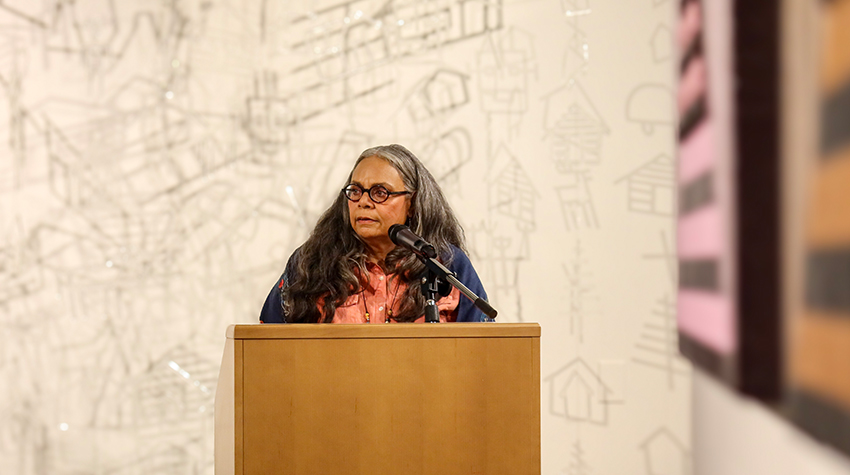
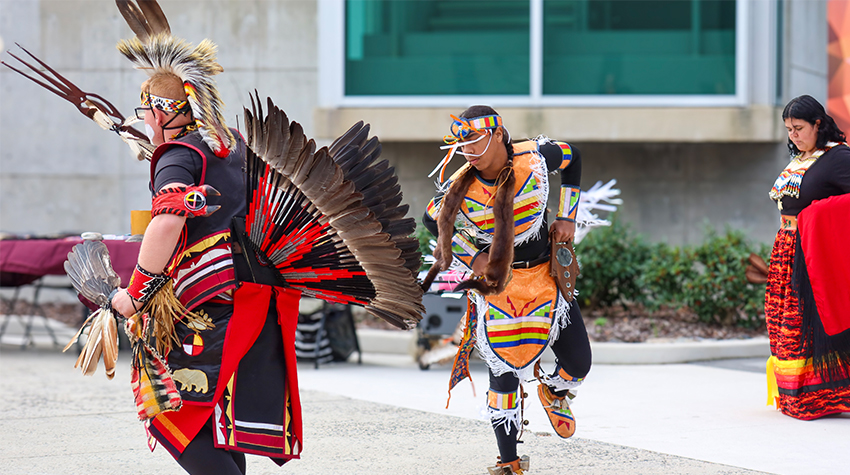
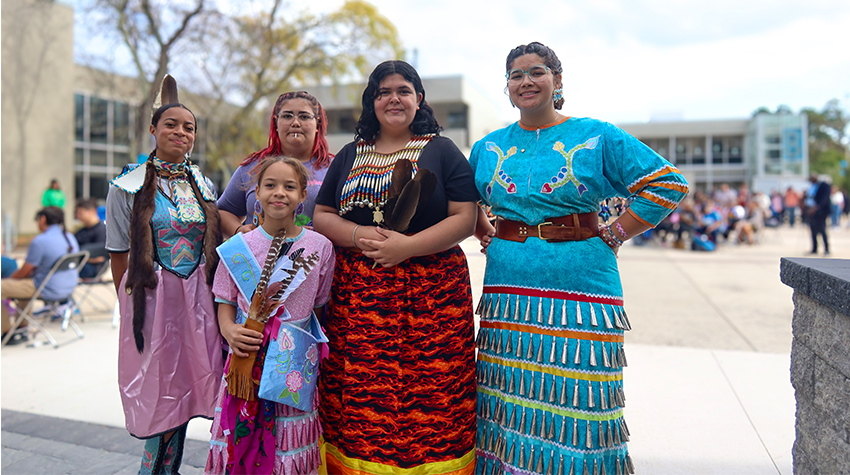
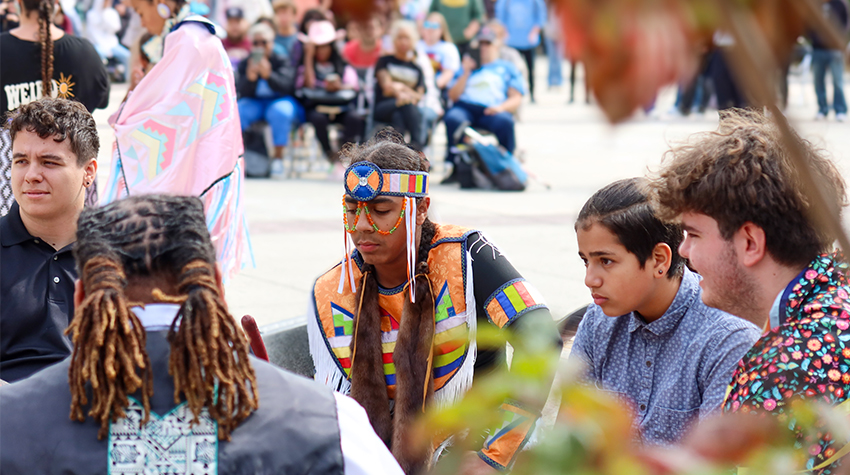
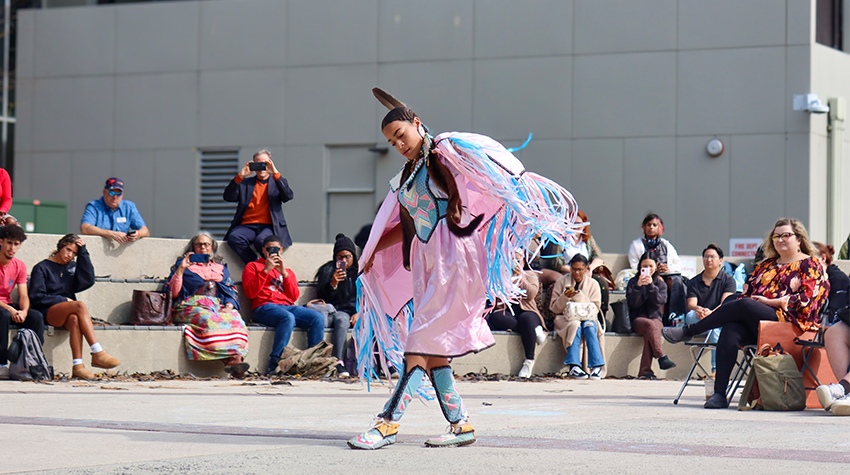
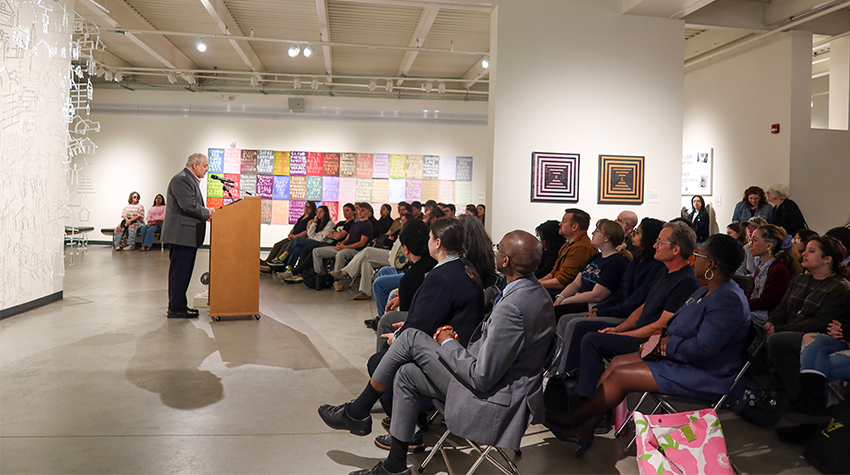
ãHere today, our youth group represents many, many different tribes, such as Nanticoke Lenni Lenape, Taino and Apache; we are not specific to one tribal nation but welcome youth from all tribes,ã Gould said. ãWe start our children young ã even before they can walk, we are carrying them in our arms or on our backs and helping them learn our cultural ways.ã
Later in the day, two panel discussions were held ã one in the Campus Center Theatre following a screening of a documentary written and produced by Associate Professor of Communication Studies Jeremy Newman and one in the Art Gallery centered on indigenous life and culture.
ÞˆÑ LRP students performed dances such as the "Duck and Dive" and Fancy Dance.
The 30-minute excerpt of the documentary delved into the complicated role of the Christian church, the tribeãs fight for sovereignty and official recognition and the passing of the torch to the next generation of tribal youth.
When Newman, who served as the panelãs moderator, asked the panelists to discuss the relationship between art, culture and identity, all of them referred to their personal experiences with their tribe and family.
Ashton Pempanik Dunkley, a doctoral candidate from ãthe most southern of tidewaters,ã shared that being raised by a mother who is an artist had a profound impact on how she viewed art, saying that the act of creation grounds her, especially when her identity as an indigenous woman is questioned.
ãNo matter what people may have said about who I am or my identity, I saw my mom, every day, being inspired by and connected to the land ã she was the first person I ever saw grow a gourd and then create pottery and give life to it,ã Dunkley said. ãWhen I think about my identity as an indigenous person, I think a lot about art and how it gives us an opportunity to appreciate the beauty of who we are as indigenous people.ã

(L-R): Jeremy Newman, associate professor of Communication Studies; Ashton Pempanik Dunkley; Tyrese "Bright Flower" Gould Jacinto; Ty "Dancing Wolf" Ellis.
Gould Jacinto and Ty ãDancing Wolfã Ellis, founder and CEO of LRP, both expressed that art isnãt always physical but rather something experienced while creating memories with loved ones in the community.
ãArt, to me, is a group of people cooking, making chow-chow or corn soup. Art is, at a gathering, making pine-needle baskets together, telling stories for elders, youth and everyone else in between,ã Gould Jacinto said. ãArt is that cohesive community tie that we take for granted. Art is not just about the end-piece but spreading traditions for the next generations to learn. Art is the community.ã
ãOne of the artists in our community has his own barbershop in Philly, and heãs like, ãThis isnãt art,ã but it very much is an art ã you do what you do, and people come back for you for a specific reason: because you do art with what you do,ã Ellis said. ãLike (Tyrese) was saying, us getting together, the energies that we create and the memories that we make are art.ã
ã Story by Loukaia Taylor
ã Photos by Lizzie Nealis
Art Gallery Exhibition Focuses on Innovative Indigenous Works
September 20, 2024

Galloway, N.J. ã ãIndigenous people are more than just what you read about in your false and colonial history books or a concept of the past. In 2024, we are contemporary.ã
This and more gems of wisdom were dropped by Indigenous artist during Sept. 17ãs Artist Talk & Workshop in the âüùƒ£º¡Èâ«èÓ Art Gallery.
Ashton-Dunkley of the Nanticoke/Lenni-Lenape Tribal Nation is one of more than 25 local and international artists featured in the new two-floor exhibition, ãIndigenous Approaches, Sustainable Futures.ã She and fellow tribe member and of the Shinnecock Indian Nation led participants on a tour of the exhibition and talked about the inspiration behind their featured works.
According to Ashton-Dunkley, her piece, ãLand Back,ã is meant to challenge the viewer to acknowledge and consider the concepts of land reclamation and the significance of Indigenous traditional and ecological knowledge, especially as the world reckons with the current climate crisis.
New Program Centers Indigenous Cultures and Identities
February 26, 2024
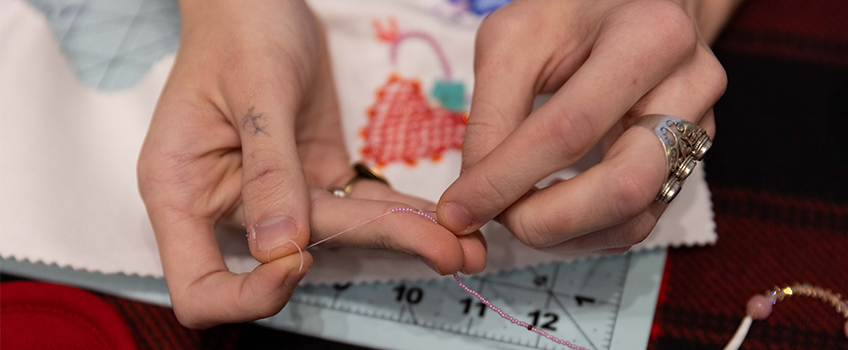
Galloway, N.J. ã Students, staff and faculty on the Galloway campus gathered in the Campus Center Board of Trustees Room on Feb. 22 to celebrate and learn more about Indigenous culture.
Guests River Webb and Claudia Haddad, members of the Nez Perce & Meskwaki (Webb) and Miãkmaw (Haddad) Northeastern Woodland tribes, presented to the audience the ceremonial and educational role of being a 2 Spirit individual and displayed their traditional beadwork.
During their presentation, Webb ã who was recently given the title ãInternational 2 Spirit Ambassadorã ã explained that the 2 Spirit identity is a contemporary word that used to replace outdated and offensive terms. The identity, which has various roots in history due to the diverse array of different Indigenous/Native tribes, has existed forever.
ã[2 Spirit] is a word meant to unify different nations - we all have our own words for 2 Spirit people in our languages, and their roles or descriptions might look different,ã Webb shared. ãPeople like us have existed and carried this role in our culture forever, as we are part of our culture. It's not a new identity, but this word, and the unity it provides for us between Tribal Nations, that is what is new, and what the word provides for us.ã

